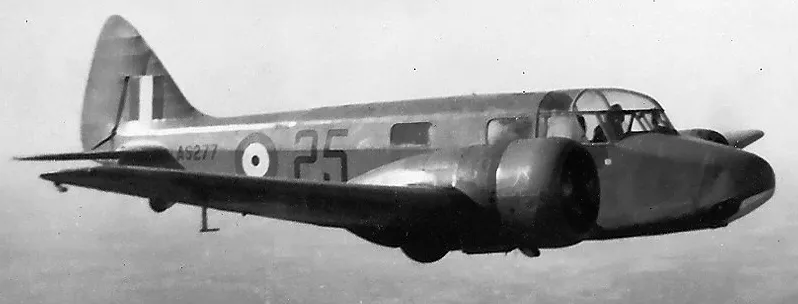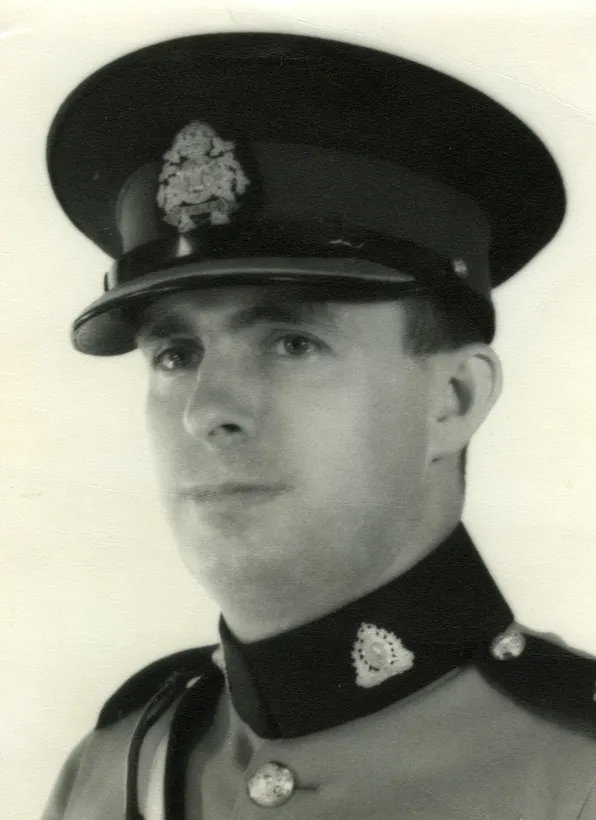Airspeed Oxford

Airspeed A.S. 10 Oxford Mk. II, RCAF (Serial No. AS277), 25, in flight over Saskatchewan, 1942.
The Airspeed AS.10 Oxford was a twin-engine monoplane aircraft developed and manufactured by Airspeed. It saw widespread use for training British Commonwealth aircrews in navigation, radio-operating, bombing and gunnery roles throughout the Second World War.
The Oxford was developed by Airspeed during the 1930s in response to a requirement for a capable trainer aircraft that conformed with Specification T.23/36, which had been issued by the British Air Ministry. Its basic design is derived from the company's earlier AS.6 Envoy, a commercial passenger aircraft. Performing its maiden flight on 19 June 1937, it was quickly put into production as part of a rapid expansion of the Royal Air Force (RAF) in anticipation of a large-scale conflict.
As a consequence of the outbreak of war, many thousands of Oxfords were ordered by Britain and its allies, including Australia, Canada, France, New Zealand, Poland, and the United States. Following the end of the conflict, the Oxford continued to achieve export sales for some time, equipping the newly formed air forces of Egypt, India, Israel, and Yugoslavia. It was considered to be a capable trainer aircraft throughout the conflict, as well as being used a general-purpose type. A large number of Oxfords have been preserved on static display. Wikipedia
CASPIR Aircraft Groups:
RCAF On Strength (821), Canadian Aircraft Losses (168)Oxford Mk. V EB659
With No. 35 Service Flying Training School when it crashed 4.5 miles north of the Red Pheasant Reserve, Saskatchewan on 19 October 1943. 3 fatalties: pilot Pilot Officer A.A. Green, RAF, Superintendent Maurice Powers of the RCMP, and Cpl. B.J. Ford-Smith, RAF. The plane was enroute from North Battleford to Saskatoon late in the day, in bad weather. The wreckage was not located until the next day, and some sources list the crash date as 20 October 1943. The aircraft struck power lines, and appeared to be attempting to return to North Battleford.
1943-04-07 Taken on Strength 2022-02-07
1943-October-19 Accident: 35 Service Flying Training School Loc: Red Pheasant Names: Ford-smith | Green | Power
1944-03-15 Struck off Strength 2022-02-07





 Canadian Virtual War Memorial
Canadian Virtual War Memorial Library and Archives Canada Service Files (may not exist)
Library and Archives Canada Service Files (may not exist) Regina, Saskatchewan
Regina, Saskatchewan

 Oxford Trainer
Oxford Trainer Wikipedia Oxford Trainer
Wikipedia Oxford Trainer Harold A Skaarup Web Page
Harold A Skaarup Web Page
 RCAF.Info - RCAF Station North Battleford SK
RCAF.Info - RCAF Station North Battleford SK Saskatchewan Virtual War Memorial - Base History
Saskatchewan Virtual War Memorial - Base History